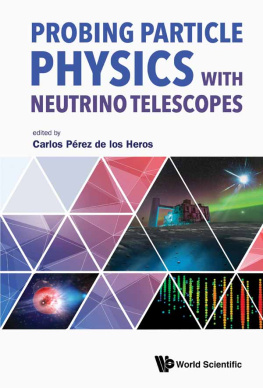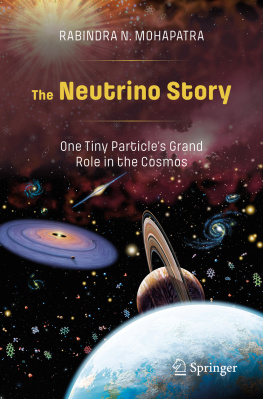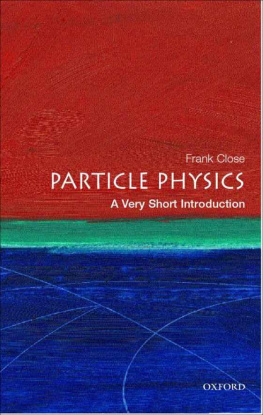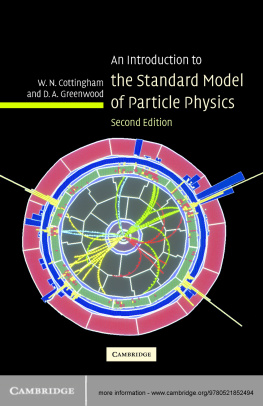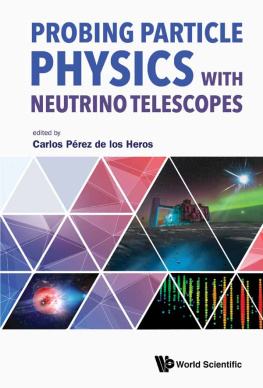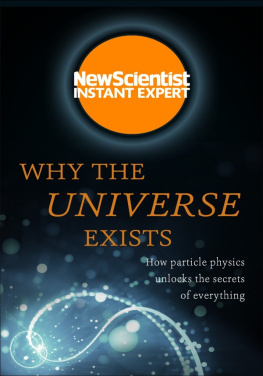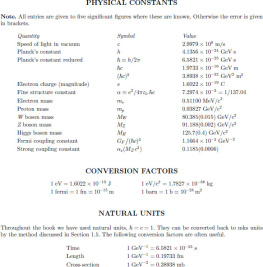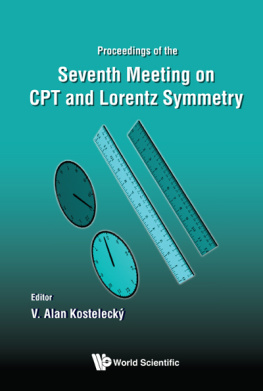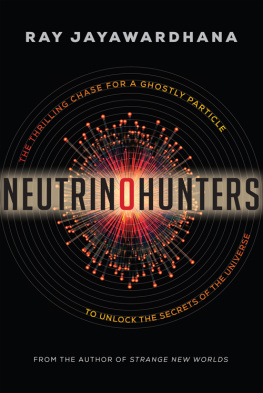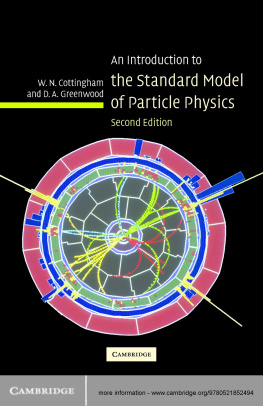Author Index
Anton, G.,
Dev, P. S. B.,
Esmaili, A.,
Gaisser, T. K.,
Halzen, F.,
Illana, J. I.,
Klein, S. R.,
Koskinen, J.,
Khnel, F.,
Masip, M.,
Ohlsson, T.,
Palomares-Ruiz, S.,
Rius, N.,
Salvad, J.,
Spurio, M.,
Chapter 1
Introduction: Particle Physics with Cosmic Accelerators
Francis Halzen
Department of Physics & Wisconsin IceCube Particle Astrophysics Center, University of Wisconsin, Madison, WI 53706, USA
At the close of the 19th century, many physicists believed that the laws of physics had been essentially settled we do not live under that illusion today. We are blessed with an abundance of puzzles covering all aspects of particle physics, including the incompleteness of the standard model, the origin of neutrino mass, and the perplexing nature of dark matter and dark energy. Over the last half century, the focus of particle physics has shifted from cosmic rays to accelerators, returning in the disguise of particle astrophysics with the discovery of neutrino mass in the oscillating atmospheric neutrino beam, the first chink in the armor of the standard model. This book anticipates strategies for exploiting natural neutrino beams, which now include very high-energy neutrinos from the cosmos. In the Preface, we introduce the cosmic accelerators that produce them in heavenly beam dumps, including in the Earths atmosphere.
Considering the size of the Sun and the rate at which it must be contracting in order to transform gravitational energy into its radiation, Lord Kelvin concluded that the Sun could not be more than 2040 million years old. His estimate, published in the March 1862 eventually used the measured relative abundances of radioactive and stable isotopes of heavy elements such as uranium to establish a lower limit of 700 million years on the solar systems lifetime. The puzzling gap between Kelvins tens of millions and the actual age of 4.5 billion years provided the hint of spectacularly new physics to be discovered at a time when many thought that all physics had left to do was dot the is and cross the ts. Today, we are blessed with an abundance of puzzles covering all aspects of particle physics, including the question of how to stabilize the Higgs mass in the standard model, the origin of neutrino mass, and the nature of dark matter and dark energy.
A century ago, neither chemistry nor astronomy had solved the puzzle of what powers the Sun; Becquerel did so by accidentally discovering a new source of energy in his desk drawer, radioactivity. In this book, the authors speculate that history may repeat itself, with heavenly problems resolved by earthbound experiments, and vice versa. Actually, cosmic beams deliver the highest energy protons, photons, and neutrinos for probing new physics. In the tradition of the pioneering days of cosmic-ray physics, a generation of novel detectors such as ANTARES in the Mediterranean, GVD in Lake Baikal and IceCube at the South Pole has already yielded new results covering particle physics. The key is that the very large volume/area of the recently constructed detectors compensates for the very low luminosity (flux) of the natural beams.
Along with the origin of cosmic rays, neutrino physics beyond the standard model tops our list of the big questions to be explored by neutrino telescopes. As with the Large Hadron Collider, there are compelling reasons to expect physics beyond the standard model in the neutrino sector. In fact, physics beyond the standard model is guaranteed by the observation of a non-vanishing neutrino mass that cannot be tailored into the standard model symmetries. If the neutrino mass itself represents a new energy scale, it comes with its own hierarchy problem with the ratio of the neutrino and electron masses at one million. Modifying the properties of the neutrino is challenging because its couplings to the charged leptons have been shown to be consistent with the standard model with exquisite precision. The introduction of right-handed neutrinos that do not couple to matter sterile neutrinos finesse this constraint. Despite multiple claims, compelling evidence for their existence has been elusive.
Every neutrino experiment is launched with the hope of stumbling on aspects of neutrino physics beyond the standard model, which we already know exist. Precision may be the gateway, with intense proton beams delivering neutrinos to next-generation neutrino detectors. The landscape of neutrino oscillation experiments reaches beyond Fermilab, though, with the IceCube Upgrade, ORCA, and Hyper-Kamiokande exploiting the atmospheric neutrino beam instead, as ANTARES, IceCube, and Super-Kamiokande are doing today. The primary goal is to detect variations with energy of the oscillation parameters, signaling new physics. Additionally, neutrino detectors can be used to target other science goals such as the search for dark matter and proton decay and, in the case of DUNE detector at Fermilab, the observation of the next Galactic supernova explosion, with capabilities that are complementary to those of the large Cherenkov detectors that are mostly sensitive to electron antineutrinos.
More than 50 years ago, pioneering experiments in deep underground mines in India and South Africa discovered atmospheric neutrinos. came up empty. They established an upper limit on a cosmic flux of

assuming an E2 energy spectrum of the cosmic neutrino beam. At a level that is more than a factor of one hundred below this, the IceCube experiment discovered in 2013 a flux of cosmic neutrinos of extragalactic origin. Thus, neutrinos became a tool for astronomy.
Two principal methods are used to identify cosmic neutrinos in the presence of a large background of atmospheric muons and neutrinos. Traditionally, neutrino searches have focused on the observation of muon neutrinos that interact primarily outside the detector to produce kilometer-long muon tracks passing through the instrumented volume. Although this allows identifying neutrinos that interact outside the detector, it is necessary to use the Earth as a filter in order to remove the background of cosmic-ray muons. This limits the neutrino view to a single flavor and half the sky. IceCube measured the atmospheric muon neutrino flux over three orders of magnitude in energy with a result that is consistent with theoretical calculations. However, with 8 years of data, an excess of events was observed at energies beyond 100 TeV that could not be accommodated by the atmospheric flux. Allowing for large uncertainties in the extrapolation of the atmospheric component to higher energy, the statistical significance of the excess astrophysical flux is 6.7.
An alternative method exclusively identifies high-energy neutrinos interacting inside the detector, so-called high-energy starting events. It divides the instrumented volume of ice into an outer veto shield and an inner fiducial volume. The advantage of focusing on neutrinos interacting inside the instrumented volume of ice is that the detector functions as a total absorption calorimeter providing an excellent energy measurement. Furthermore, with this method, neutrinos from all directions in the sky can be identified, including both muon tracks and secondary showers, produced either by charged-current interactions of electron and tau neutrinos or by neutral-current interactions of neutrinos of all flavors. Neutrinos of atmospheric and cosmic origin can be separated, not only by their well-measured energy but also
The observation of neutrinos of cosmic origin has also been confirmed by the appearance of very high-energy tau neutrinos in the cosmic beam, including one event where a tau traveled 17 m through the ice before decaying. IceCube also identified a first Glashow-resonance event where an intermediate boson was produced in the interaction of a 6300-TeV antielectron neutrino with an atomic electron.

